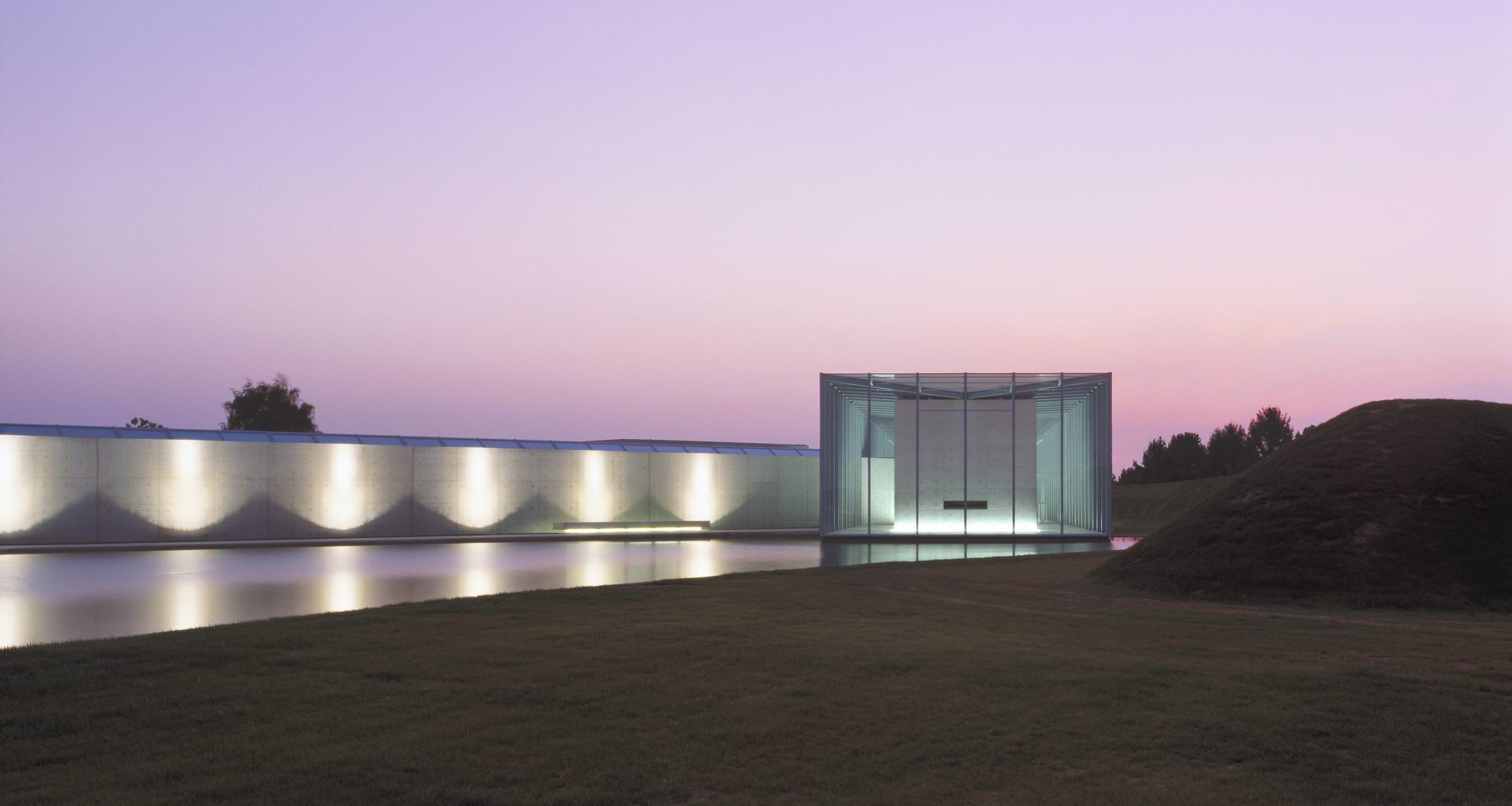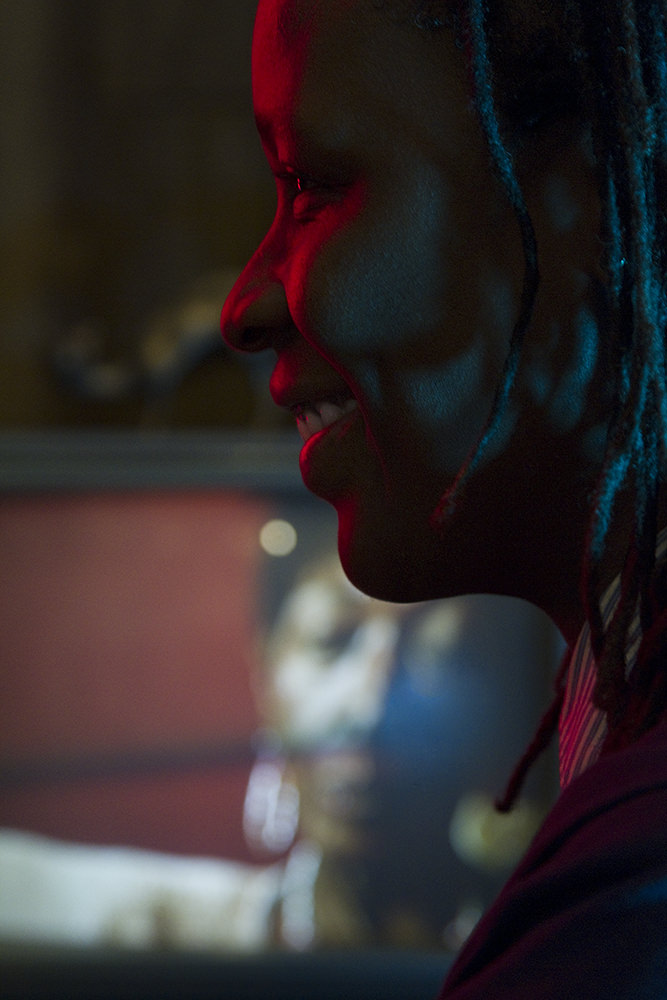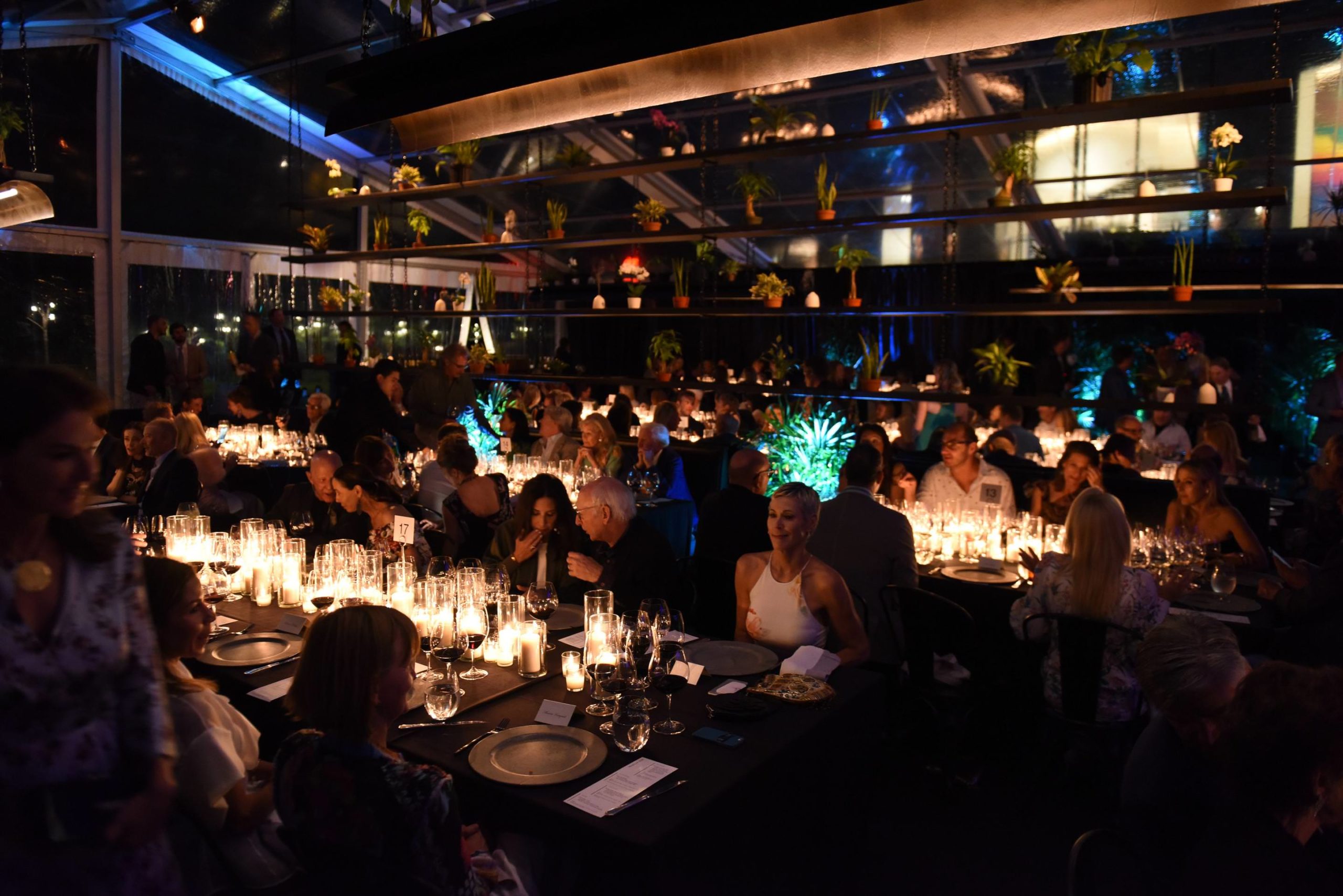At the beginning of the month, the new Aspen Art Museum opened in Colorado to much fanfare – a ribbon cutting, the 10th annual ArtCrush, and a members-only preview. The architect, Shigeru Ban, is behind the new building, and also the subject of Whitewall‘s summer 2014 Design Issue‘s architecture feature.
Below is our interview with the 2014 Pritzker Prize winner in case you missed it in print.
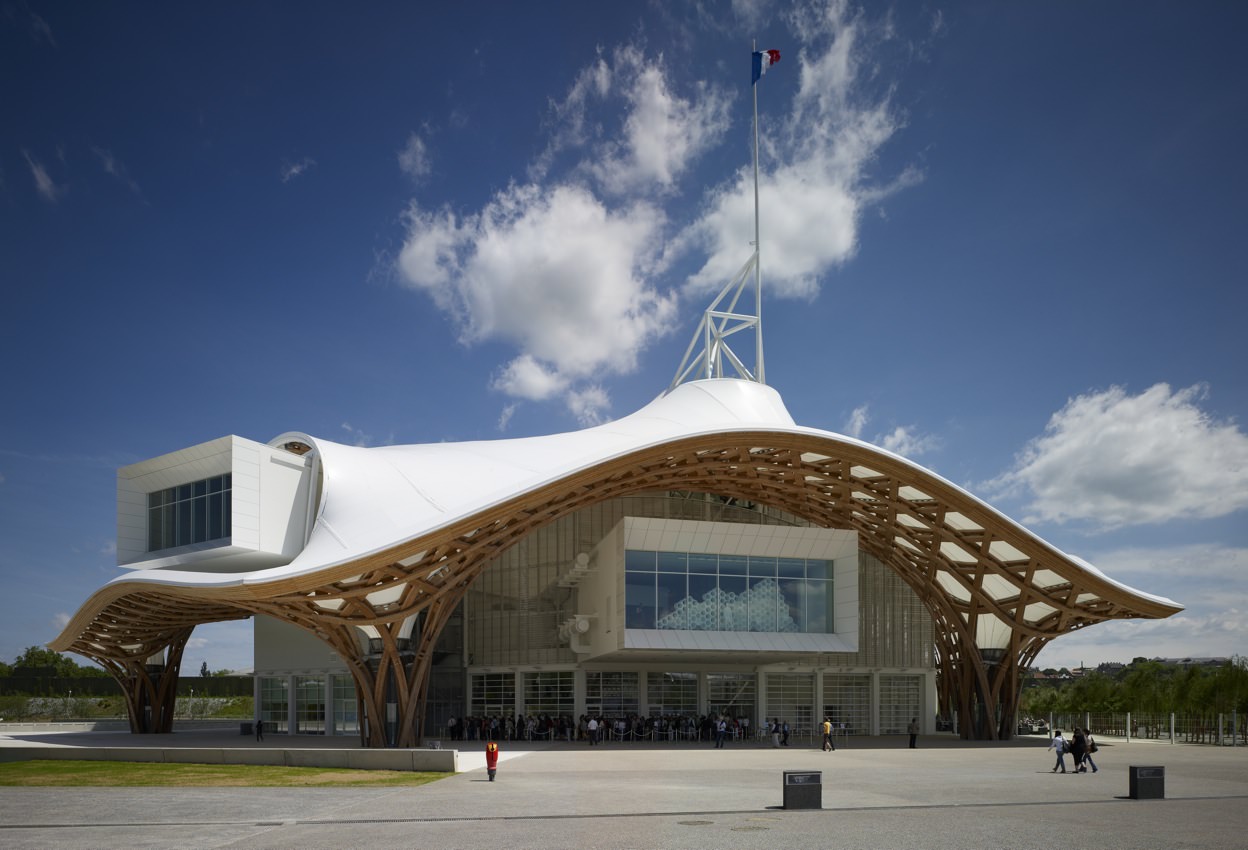
Centre Pompidou-Metz, France (2010), designed by Shigeru Ban.
Courtesy of Shigeru Ban Architects.
********
SHIGERU BAN
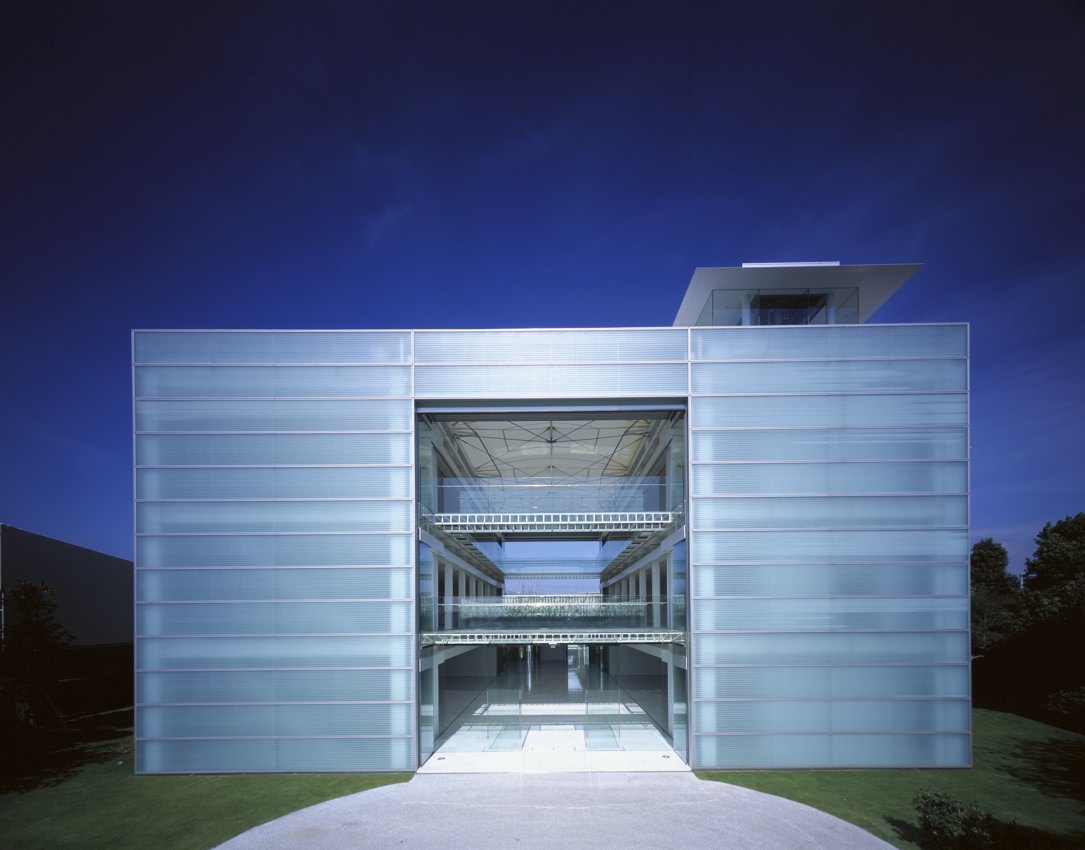
The Paper Art Museum, Shizuoka, Japan (2002), designed by Shigeru Ban.
Courtesy of Shigeru Ban Architects.
By Anna Sansom
By winning this year’s Pritzker Prize, Shigeru Ban has proven that socially conscious architecture deserves to be applauded alongside iconic buildings. To many people, the Japanese architect is better known for his paper tube structures (PTS) than for his permanent projects. Ban, 57, came to prominence after designing the Paper Church in the aftermath of the Kobe earthquake in Japan in 1995. After being disassembled in 2005, it was reconstructed in Taiwan—proof of the longevity of PTS. Ban is an architectural Batman, flying into disaster-stricken sites to offer solutions in the wake of earthquakes and tsunamis. Count in emergency shelters in Rwanda and Haiti; elementary schools in Chengdu, China; a concert hall in L’Aquila, Italy; and a cathedral in New Zealand—all made from PTS.
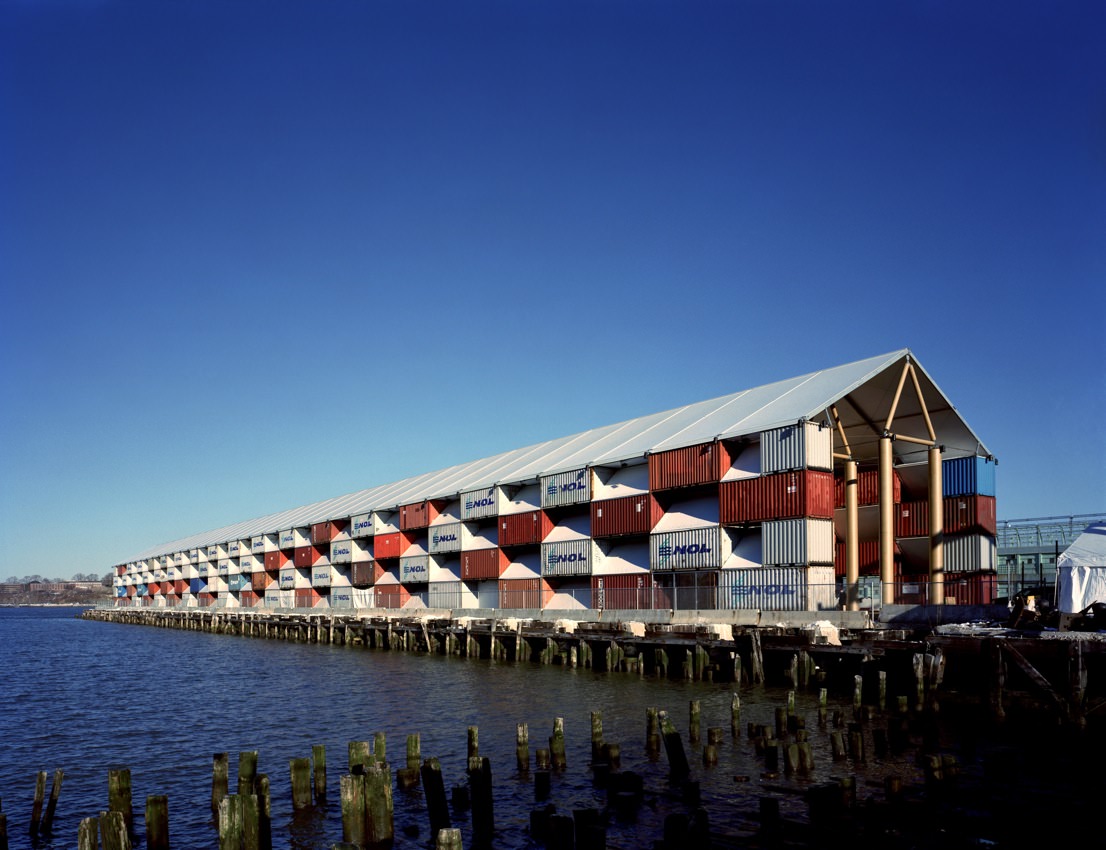
Nomadic Museum in Santa Monica, CA (2006), built for Gregory Colbert’s “Ashes and Snow,” designed by Shigeru Ban.
Ban has signed off on impressive landmarks, too, such as the Centre Pompidou-Metz in northeastern France with its central spire and wavy, woven timber roof based on the hexagonal pattern of a Chinese peasant’s hat. Timber structures feature strongly in his work, such as in the highly anticipated new Swatch headquarters, Swatch-Omega Museum and Omega production facilities in Biel, Switzerland. The main building, encased in a decorative wooden crossbeam pattern, flows “like a snake,” says Ban. Ban also developed an innovative structural system made entirely from timber, without any steel connections, for a seven-story edifice to serve the headquarters of the Swiss media company Tamedia in Zurich.
This July sees the unveiling of the new Aspen Art Museum in Colorado. Replacing the former building on the banks of the Roaring Fork River, it is located downtown on the corner of Spring Street and Hyman Avenue. The two main facades are enveloped in what Ban describes as a “woven wood screen,” formed of irregularly sized openings. Unusually, Ban has placed the entrance foyer on the rooftop, requiring visitors to go up to the third floor, which overlooks the nearby mountains. A double staircase leading from the plaza in front of the museum to the foyer and outdoor rooftop is divided into two parallel parts—one on the inside and one on the outside—and this relationship between the interior and exterior continues on the rooftop, where a triangular roof separates the outdoor sculpture garden from the foyer.
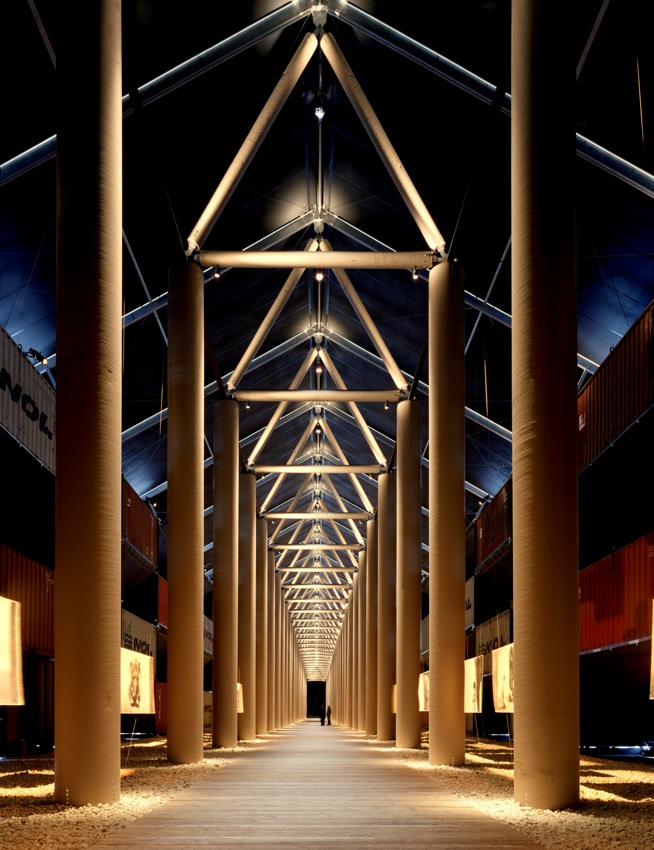
Courtesy of Shigeru Ban Architects.
Besides his humanitarian, cultural, commercial, and residential projects, Ban is a professor at the Kyoto University of Art and Design. Whitewall spoke to him in his office in Paris (he also has offices in Tokyo and New York) three days after he was awarded the 2014 Pritzker Prize.
WHITEWALL: Congratulations on winning the Pritzker Prize!
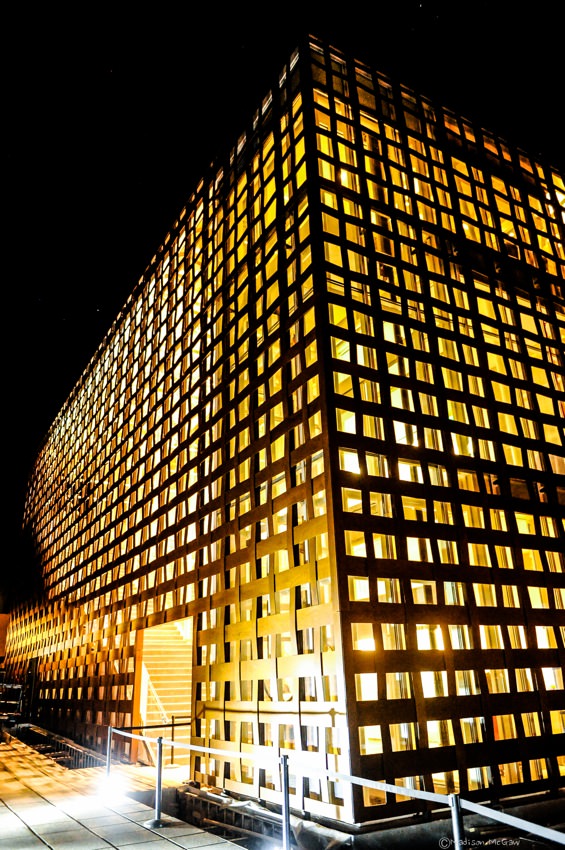
Nomadic Museum (2005-present), built for Gregory Colbert’s “Ashes and Snow,” designed by Shigeru Ban.
SHIGERU BAN: Thank you.
WW: What does this signify for you?
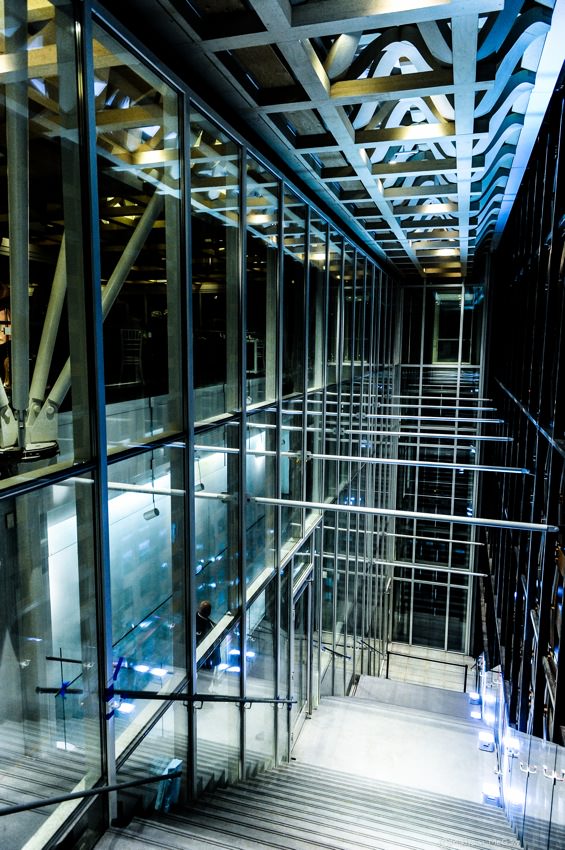
Courtesy of Shigeru Ban Architects.
SB: Frankly speaking, I’m very surprised about this because I didn’t think that I was at that level of architect yet. Especially because I was on the jury for the Pritzker Prize between 2006 and 2009, so I know how important it is and how complicated it is to make decisions. I never expected that I could be a candidate. But I knew that this year the main reason why they chose me was because of my activities—not only designing private commissions, but also working in disaster areas for over twenty years. So it’s expanding the role of the architect toward social issues.
WW: How do you hope that your being awarded the prize will encourage more architects to rethink the priorities of architecture and become involved in public projects and social issues?
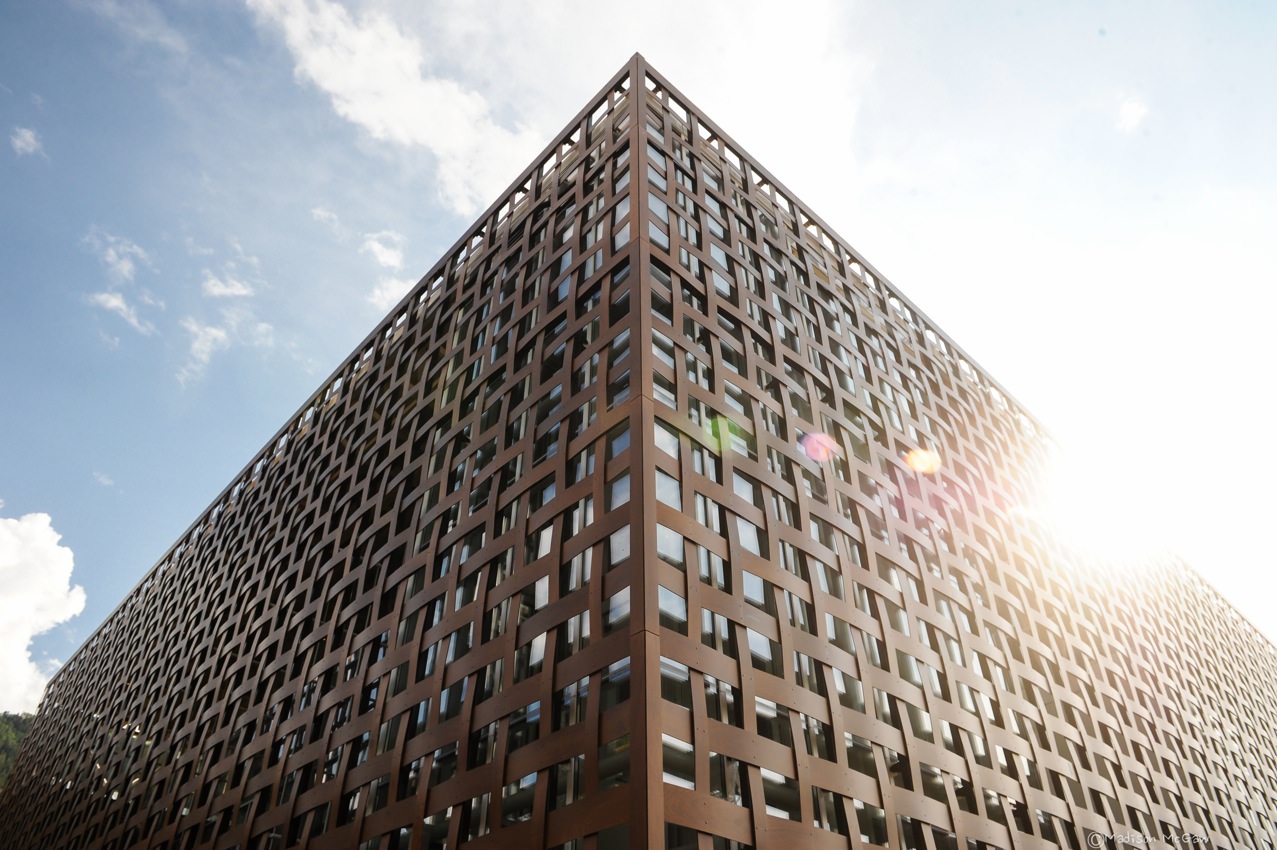
Photo by BFA
SB: I give lectures all over the world, and I feel that now there are so many young architects and students that are really interested in working in social issues. Many of them ask to join my team in the disaster area. So I think it has become a very strong encouragement, not only for myself but also for young people who are thinking with the same kind of attitude. I just want to continue what I have been doing instead of changing. This award is such an honor, but it could also give me more opportunities for more projects. I should be very careful to keep the same style and not make the office bigger to accept more projects, because I need my own time to work on disasters and on education in schools. So this is a big encouragement, but I need to be careful.
WW: Careful not to become a star architect and grow too fast?
SB: Exactly.
WW: You became involved in humanitarian projects after being hired from 1995 to 1999 by the United Nations High Commissioner for Refugees as a consultant for the refugee camps in Rwanda in the wake of the 1994 genocide. How did that come about?
SB: I had seen a photo of really poor, plastic-sheet shelters and people were freezing in their blankets because the sheeting was so poor and couldn’t keep them warm enough during the rainy season. I wrote a letter about how to improve the shelters, but received no reply. So I went there by myself to the United Nations High Commissioner for Refugees in Geneva, and I was lucky to meet the general architect who was in charge of shelter construction. His problem was one of differentiation, because the United Nations only provides refugees with plastic sheets and they have to cut the trees by themselves to make a frame [for a shelter]. If over two million people cut trees, it becomes a very serious environmental problem. So this is why the general architect thought that my proposal of using paper tubes could be a good solution. I thought we could make the shelters more comfortable than we did, but this was not possible because of the United Nations’ policy.
WW: What do you mean by that?
SB: If the shelters are too comfortable, the refugees would want to stay there longer. That’s why we could just provide a minimum shelter.
WW: The last time we met, you said that governments do not take proper care of disaster victims and often put them in gyms, for instance, rather than create adequate temporary accommodation.
SB: Governments anywhere are not looking for comfortability and beauty for temporary structures. But I think people that have had a terrible experience should stay somewhere comfortable and beautiful. Because there are no architects anywhere involved in these kinds of projects, this is why our involvement makes conditions better, and I’ve just proved it.
WW: Do you think the mentality of architects is changing, or is it still too focused on designing monumental structures for privileged people and corporations?
SB: The social responsibility of architects is a really important issue. We have previously been working for rich people and corporations, and there is a need for architects to do social work. We have more natural disasters everywhere in the world. Even in Japan, when I was working in Kobe in 1995, there were no architects working in this area back then. But after the Great East Japan Earthquake three years ago, there are many architects working there [on reconstruction projects]. So I think that the mentality and interests of architects is changing.
WW: What was your involvement in the reconstruction after the Great East Japan Earthquake?
SB: I started to make partitions to keep the privacy of each family at the evacuation facilities—we built over eighteen hundred units for fifty facilities—and I made three-story temporary housing.
WW: Is the last humanitarian project that you did the Christchurch Cardboard Cathedral in New Zealand, following the 2011 earthquake, that was unveiled last August?
SB: Actually, I have two more projects going on now. One is Chengdu in China, where there was a big earthquake in Lushan last April. I’m working with local people building a temporary nursery school, using local paper tubes. I’m going there this weekend. It’s a similar project to the one that I did after the Sichuan earthquake in the same province in 2008. And I’m doing another project in the Philippines. Last October there was an earthquake and in November they had a big typhoon. I’m working with local students building a temporary shelter. We’re using locally available materials and bamboo sheets, which are also used for housing in that area. So it’s mixing local materials with my basic framing system of paper tubes. As paper tubes are not [regarded as] a building material, they’re easy to get because after a disaster building materials always become more expensive.
WW: In 2009 in the aftermath of the earthquake in L’Aquila in Italy, you approached the mayor and offered to make a temporary concert hall for the city’s musicians. Did you similarly take the initiative to get involved to rebuild the Christchurch Cathedral?
SB: I got an e-mail from the priest, who by chance had seen a photo of my Paper Church in Kobe. The first thing that he asked was, “How much is your design fee to design a temporary cathedral in Christchurch?” I told him that if the cathedral was going to be used not only for religious ceremonies but for community use, I’d do it pro bono, voluntarily, as a normal project. I also asked to go over there. So there was no contract, no fee, nothing!
WW: So you did it out of charity?
SB: All of my projects are out of charity, except for the United Nations project in Rwanda, where I was hired as a consultant.
WW: Following on from the Centre Pompidou-Metz that opened in 2010, you’ve designed the new Aspen Art Museum, which opens in Colorado this summer. What can you tell us about your design and how it was inspired by the local mountainous landscape?
SB: The site is in the middle of downtown and is actually quite small. In Colorado there are many very nice teak wooden buildings, so I wanted to use wood as much as possible. On the ground floor there is not enough space to have a big foyer and you cannot see the surroundings. So the idea is to bring people from the ground floor via the “grand staircase” or the “glass reception elevator” to the rooftop, where they can enjoy the beautiful mountainous view. The rooftop is kind of like the welcome area, and there’ll also be a space that is totally connected, in an inside-outside way, with a sculpture garden. Then you’ll come downstairs, one by one, to enjoy the art. It’ll be a similar experience to skiing, and how you take a ski lift to go up to the top of the mountain to enjoy the view and then go down.
WW: Your other current cultural project is the Cité Musicale, a music venue on Île Seguin, an island in the west suburbs of Paris. Your circular auditorium is encased in a timber framework and has a huge solar panel, balancing the idea of monumentality with a concern for sustainability. What ideas did you reflect upon?
SB: The client [the Hauts-de-Seine department] strongly requested that we design an iconic building as a west gate to Paris. Instead of designing a funny, strange sculptural shape as a monument, I wanted to design something more meaningful, which would follow the sun, in order to create a more efficient [system], generating [solar] energy. The ideas are based on the environment and technology to make the building monumental. This auditorium is for twelve hundred seats, and we’re also building a big theatre there for four thousand seats.
WW: You’ve just won the commission for the Mount Fuji World Heritage Center. How have you interpreted this iconic mountain, which was recognized as a World Heritage cultural site by UNESCO last year?
SB: In the very famous image of Mount Fuji, the mountain is reflected on the lake. My design is the opposite—the shape of the building is the [inverted] shape of the mountain and has a pond, a water feature. So when the building is reflected on the water, it looks like the shape of the mountain. When you see the building, it doesn’t look like the mountain but the reflection is like the mountain. We have to complete it in three years. Unfortunately, I have very few opportunities in Japan—this is my second public project there. So I’m very happy to have this opportunity.
This article was first published in Whitewall‘s summer 2014 Design Issue.





